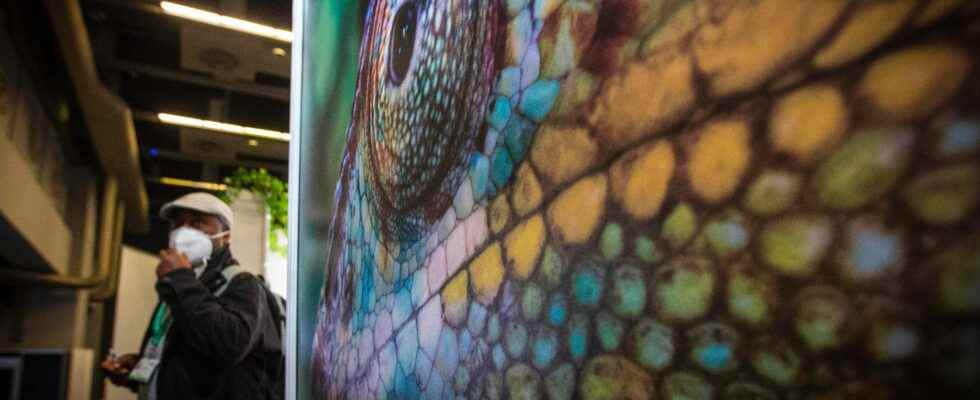It took four years of negotiations and a plenary session in the middle of the night, this Monday, December 19, for more than 190 States to adopt a “historic agreement” whose objective – immense – is to stop the collapse of life. At the end of the COP15 biodiversity organized in Montreal (Canada) and chaired by China, the President of the European Commission Ursula von der Leyen applauded the “roadmap to protect and restore nature” which the International community. This “peace with nature pact”, called the “Kunming-Montreal Agreement”, aims to protect land, oceans and species from pollution, degradation and the climate crisis. “Together we have taken a historic step,” welcomed Steven Guilbeault, Canada’s Environment Minister, who had to host the summit after China gave up holding it in Kunming because of its “zero zero” policy. Covid”.
The countries have agreed on a roadmap aiming in particular to protect 30% of the planet by 2030 and to release 30 billion dollars in annual aid for conservation for developing countries. Five other texts aimed at making this framework applicable, measurable, effective and, above all, at financing the efforts required of developing countries, were also approved. Overview.
- 30% of the planet protected
This is the key objective of the text: “that, by 2030, at least 30% of land areas, inland waters and coastal and marine areas […] are effectively conserved and managed”. This will be done “through networks of ecologically representative, well-connected and equitably managed protected areas” and “while ensuring that any sustainable use […] is fully compatible with conservation objectives.” The objective is therefore global and not national, implying that some do more than others, or do more on land than at sea. This 30% is a minimum for scientists and NGOs, who believe that 50% would be necessary.To date, 17% of the land and 8% of the seas are protected.
“Most people say it’s better than we expected on both sides, for rich and developing countries alike. That’s the mark of a good text,” Lee White told AFP. , Gabonese Minister of the Environment. For Masha Kalinina of the NGO Pew Charitable Trusts, “protecting at least 30% of land and seas by 2030 is the new North Star that we will use to navigate towards the restoration of nature”. “Moose, sea turtles, parrots, rhinos, rare ferns are among the million species whose future prospects will be significantly improved” by this agreement, added Brian O’Donnell, of the NGO Campaign for nature.
- 20 billion in international aid
The negotiations were marked by a long bargain between the North and the South: more ecological ambitions in exchange for more international subsidies, and vice versa. Finally, the text endorses the goal for rich countries to provide “at least $20 billion per year by 2025, and at least $30 billion per year by 2030”. That is about double, then triple, the current international aid for biodiversity.
New: the objective is incumbent on “developed countries, and countries which voluntarily assume the obligations of developed countries”, members of the Convention on Biological Diversity (CBD). This formulation makes it possible to integrate the United States, which is not a signatory to the Convention, and opens the way to the integration of China or the Arab States among the donors, hopes the European Union. COP15 also approves the creation of a new branch of the Global Environment Facility (GEF), dedicated to the application of the Kunming-Montreal agreement – an alternative to the separate fund that many countries of the South still hope to obtain in the future.
- Restore 30% of degraded land
A third of land is “moderately or heavily degraded” by human activity, according to the FAO. To remedy this, the text provides “that, by 2030, at least 30% of terrestrial ecosystems, inland seas and degraded coastal and marine ecosystems will be subject to effective restoration”.
A long showdown has pitted the European Union against countries like Brazil, India and Indonesia. The agreement ultimately aims to “reduce the risks of pollution and the negative impact of pollution from all sources, by 2030, to levels that are not harmful to biodiversity”. To achieve this, the signatories must, among other things, “reduce by at least half the overall risk linked to pesticides and highly hazardous chemicals” in particular through pest control, taking into account food security and livelihoods. Countries must also “prevent, reduce and work towards the elimination of plastic pollution.”
- Framework for implementation
Virtually no objective set in the previous agreement, in 2010 in Aichi (Japan), was achieved at its end, in 2020. Drawing lessons from this failure, the countries adopted a common planning and monitoring mechanism, with specific indicators. And a possible revision of national strategies, if countries are not on the right path. But the text is less restrictive than that on the Paris climate agreement.
The agreement would never have been approved without progress on an “injustice” brandished by many countries of the South: the absence of sharing of the profits made by the North with medicines or cosmetic products derived from their biological resources. These resources have become billions of digitized genetic data, benefiting almost exclusively to research and the economy of rich countries.
The text provides for establishing “a global mechanism for sharing the benefits arising from the use of digital sequence information (ISN/DSI) of genetic resources, including a multilateral fund”.
